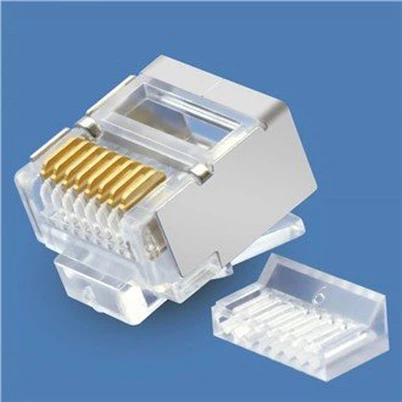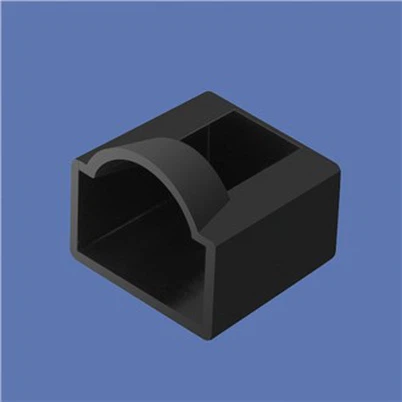Key points in data center cabling
Jun 29, 2023
Leave a message

1. Introduction
Data center cabling construction can be considered a very challenging task. Typically, data centers have hundreds or even thousands of cables. How can these cables be organized and arranged in an orderly manner? How should we plan our cabling? What should we pay attention to?
2. Main Text
The data center is a crucial part of the overall network system and serves as the central hub for all network cables. Data center cabling is inevitably the most complex aspect of the entire cabling project because data centers often house thousands of various types of cables, including power lines and network cables. In large-scale networks, there may even be tens of thousands or hundreds of thousands of cables. As network administrators, when there is a network failure, we are often compelled to find solutions among this pile of cables. This requires cultivating good work habits from the beginning of the cabling process, including organizing various equipment neatly, categorizing and bundling cables in an orderly manner, and creating proper labels.

Data center cabling needs to pay attention to the following key points.
2.1 Determine the appropriate location for the data center
The choice of location for the data center is crucial and should consider various factors such as safety, surrounding environment, and distance from different work areas. Since the equipment in the data center often has high power and generates a significant amount of heat, the data center should have good ventilation but should not be located where direct sunlight shines. It should also be protected from rain, humidity, and rodent damage. Another key aspect is the distance from the work areas. If the building has multiple floors (5 floors or more), it is best to choose a room on the middle floor as the data center. This way, the distances between connected floors are likely to be within the maximum 100m limit for twisted-pair cables. If the building has fewer floors (4 floors or less), it is recommended to deploy the data center on the ground floor. This is beneficial for the cabling in the data center and keeps it away from the work areas, so users won't frequently be exposed to various odors emitted by the equipment. However, appropriate moisture protection measures need to be implemented.

2.2 Determine the appropriate cabling method
Currently, there are two main cabling methods: raised floor and overhead (suspended) ceiling. Raised floor involves burying various cables in cable trays or conduits beneath the floor, while the overhead ceiling uses cable trays or conduits and brackets to suspend the cables from the ceiling.
The choice of cabling method depends on specific circumstances. If the data center is located on the ground floor, it is recommended to use the raised floor method. This not only makes the overall appearance of the data center neater but also takes advantage of the naturally cooler environment of the ground floor, which aids in heat dissipation. Additionally, excavating cable trenches in the ground is more feasible in this case. However, if the data center is on a middle floor, excavating cable trenches is generally not allowed due to the thinner floors. In some cases, if the design and planning of a newly constructed building have already considered this, such as having a dedicated wiring room with a significantly lowered floor, it facilitates the installation of various cable trays and conduits.

2.3 The power rating and type of power sockets should be suitable.
When choosing power sockets, it is important to consider the socket types. Since computer power supplies use unique round three-prong plugs, it is necessary to install power sockets that support the corresponding plugs. Currently, dual-purpose sockets are commonly used, which support both standard flat three-prong plugs and specialized round three-prong plugs for computers. Multi-functional socket modules are often used, which combine power outlets with RJ-45 network ports and telephone line ports on a single socket. In addition, it is advisable to install a few other commonly used standard power sockets for future use.
Some engineers may think that power socket failures are common and easy to handle, but this is an oversimplification. It is not uncommon to encounter situations where newly purchased high-power devices cannot be plugged into the available sockets. Some devices may have European-style large triangular plugs, which may not be compatible with the internal computer-specific power sockets in the data center. This can result in the use of multiple power connection boards, leading to a cluttered appearance in what should have been an organized data center. These are the consequences of inadequate consideration during the cabling planning stage.
While most equipment in the data center can use standard power sockets, some high-power devices such as UPSs and servers have special requirements. Just like in a household, each socket has a power limit and should not be used arbitrarily. UPSs can have a power rating of several kilowatts, while switches and routers may only require tens of watts, and high-end servers can have power ratings in the thousands of watts. The power supply for these devices should be appropriately matched, especially for UPSs. It is also important to note that multiple sockets should not share a single circuit to prevent exceeding its power limit due to the connection of too many devices, which could result in a fire. Typically, a data center should have at least two dedicated 40A power sockets for UPSs or air conditioning units, five dedicated 20A power sockets for servers or other high-power devices, and an adequate number of standard 10A sockets. The specific quantities will depend on the size of the network.
Due to the special requirements of various network devices for power sockets, it is essential to consider the potential future devices and their respective power demands during the cabling process. This, combined with the cabinet structure, will help determine the appropriate power sockets with corresponding power capacities (including suitable power cables). Of course, the maximum capacity of each socket should be higher than the maximum power of the connected devices. If power extension boards are required, they should also meet the corresponding power capacity needs, including the cables used with the extension boards. It is recommended to choose power sockets and extension boards from reputable manufacturers (a good-quality power board often costs over a hundred yuan). The quality of power sockets can also be judged by the thickness of the power cables. In general, low-quality power sockets may claim to support 10A or 15A, but their cables are very thin, and the actual power they can provide is far below the claimed value.
2.4 Well-organized cabling and classification labeling.
In the data center, there are various types of cables. If proper bundling and labeling are not done during the initial cabling process, it will be difficult to determine which network cable to connect and which power socket to use when installing specific equipment. Do not underestimate the importance of this. Otherwise, all the previous cabling work may be in vain. Among these, the most crucial aspect is the cabling for low-voltage systems.

Low-voltage cabling mainly includes coaxial cables, twisted pair cables, and telephone lines. Special wiring racks should be used for cabling, arranged according to necessary rules, with excess parts trimmed and no excessive slack left. Afterward, they should be neatly bundled and secured with nylon ties, classified by category. If it is necessary to leave a longer slack, the excess portion should be properly secured. It is also important to note that labels must be made and records should be kept before bundling the cables; otherwise, it will be difficult to identify which specific device each cable is connected to, especially during cabling maintenance.
In addition, grounding wires should not be forgotten during the data center cabling. The specific types of grounding wires have been explained earlier. Because modern data centers house high-performance computers and network communication equipment, strict grounding requirements are necessary. Grounding is a critical measure to eliminate common impedance, avoid capacitive coupling interference, protect equipment and personnel, and ensure the stable and reliable operation of computer systems. Grounding wires are often arranged below the data center floor using copper bars for signal grounding, to meet various grounding needs within the facility. The copper bars are then connected to the low-voltage signal grounding system through dedicated lines.
Both power cables and low-voltage cables in the data center cabling should be placed in metal wiring ducts. The specific size of the metal wiring ducts can be determined based on the number of cables, considering the necessary room for future expansion. The spacing between power cable ducts and low-voltage cable ducts should be maintained at least 5cm or more, and they should not cross each other to avoid electromagnetic interference between them.
2.5 Consider future maintenance and management thoroughly.
In the construction of a data center, many people only focus on neatly placing various equipment and cabinets, without considering the potential trouble it may cause for future maintenance and management. Sometimes, when inspecting a specific port or wiring interface of a device, it becomes difficult to access them due to the lack of space between cabinets. This creates significant difficulties for maintenance work, often requiring the tedious task of moving cabinets one by one. Considering that cabinets contain heavy equipment, the level of difficulty can be imagined. Although we are not discussing the final equipment placement here, the cabling in the data center largely determines the arrangement of future equipment. Therefore, during cabling, careful consideration should be given to the future placement of equipment and cabinets.

There are generally two different methods of cabinet placement: "cross" and "well" arrangements. Both methods ensure sufficient space between cabinets, allowing administrators to easily access the front and back ports of any device for maintenance. The "cross" arrangement is more suitable for circular data center layouts, while the "well" arrangement is more suitable for grid-like data center layouts. It is important not to arrange the cabinets in a simple straight line.
The key to data center cabling lies not only in the abundance of various cables but also in its role as the "nerve center" of the entire network system. If one device or even one port malfunctions, it can potentially disrupt the entire network or a large number of users' network connections or applications. Therefore, when cabling the data center, it is essential to follow the standards and guidelines for construction.
Previous:All types of patch panels






